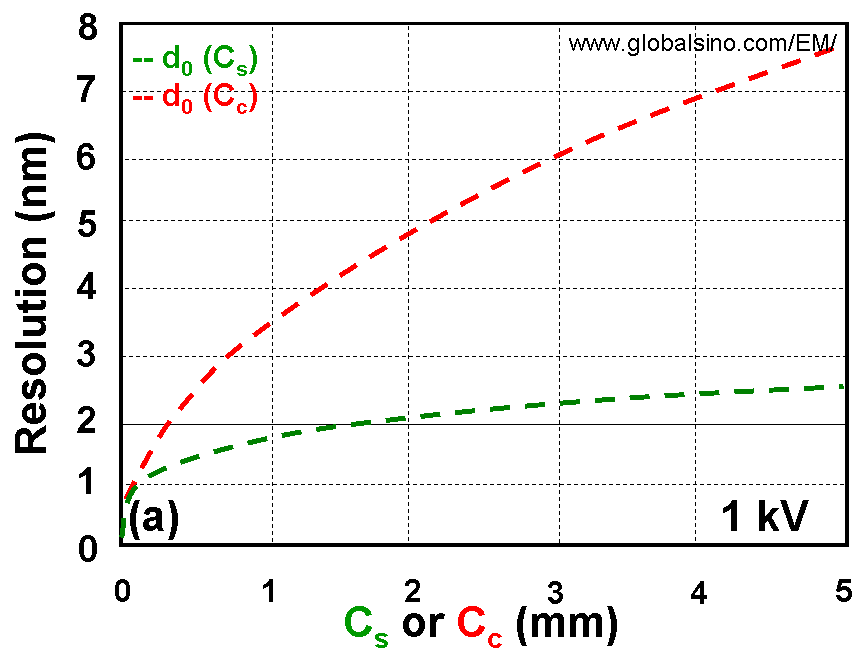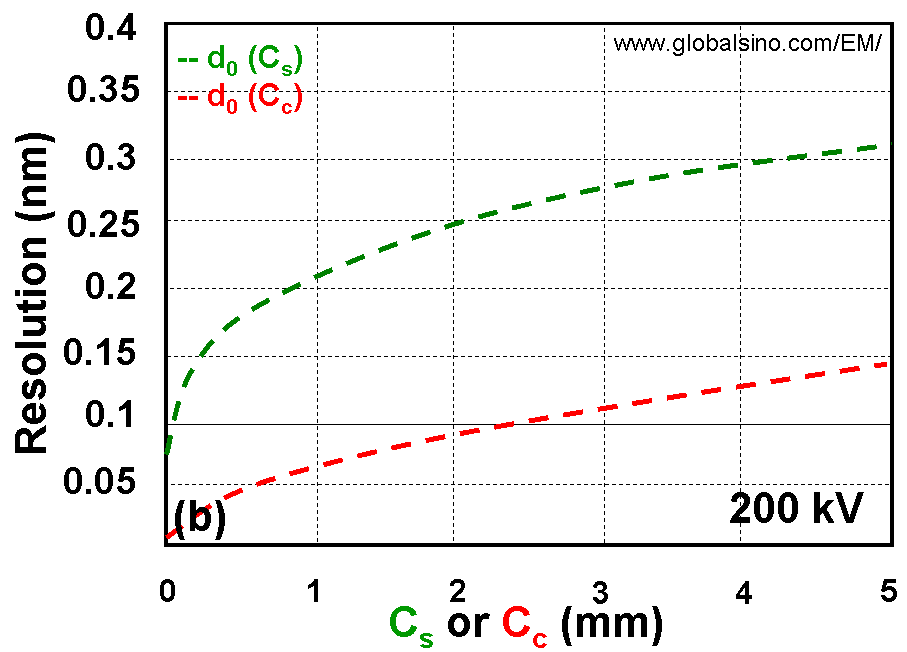=================================================================================
As shown in Figure 3644, at high accelerating voltages (e.g. 200 kV) the spherical aberration is dominant, while at low accelerating voltages (e.g. 1 kV) the chromatic aberration is dominant. Generally speaking, spherical aberration is the dominant resolution-limiting aberration at accelerating voltages larger than about 100 kV.
 
Figure 3644. The estimated resolution limits at 1 kV and 200 kV as function of Cs and Ccassuming only one of them is present in each case. The energy width of the beam was assumed to be 0.7 eV.
In STEM, the fluctuations in accelerating voltage or the current flow in the probe-forming electromagnetic lenses contributes to the chromatic aberration that leads a cutoff to the highest spatial frequency. In HRTEM, the cut-off frequency corresponds to the information limit. In STEM, the effect of the fluctuations induces additional contribution to the probe size [1],
 ------------- [3644] ------------- [3644]
where,
Cc -- The chromatic coefficient,
E0 -- The energy of the electron beam,
I -- The current in the probe-forming lens,
ΔE -- The spread in energy of the beam,
ΔE0 -- The fluctuation in the accelerating voltage,
ΔI -- The fluctuation of the lens current.
The high-tension power supply and beam-current in modern electron microscopes can achieve 10-7 stability so that the main source of the chromatic aberration is due to energy spread of the electrons within the probe. At high accelerating voltages, the chromatic effect is not as important as the effect of the spherical aberrations as shown in Figure 3644 unless the STEM is operating at a low accelerating voltage such as below a certain voltage depending on the properties of the system, such as 60 kV where the chromatic and spherical aberrations of round lenses are roughly equal.
[1] Spence JCH. High resolution electron microscopy. 3rd ed. Oxford: Clarendon Press; 2003.
|


 ------------- [3644]
------------- [3644]